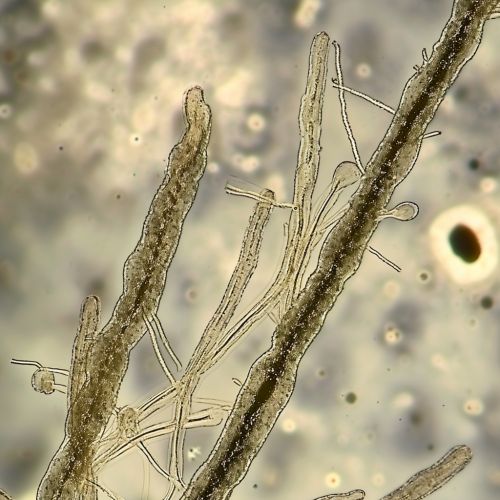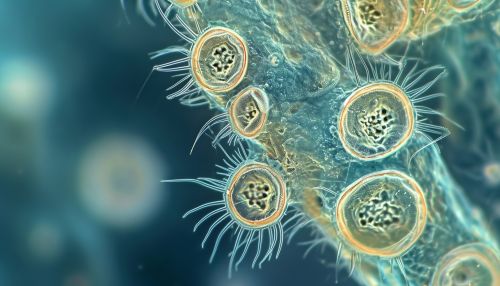Endomyxa
Overview
Endomyxa is a phylum within the supergroup Rhizaria, which is a major component of the eukaryotic tree of life. The Endomyxa are characterized by their amoeboid nature, with most species possessing a unique form of pseudopodia known as filopodia. These slender, thread-like extensions are used for motility and feeding, often extending and retracting rapidly as the organism moves or captures prey. The Endomyxa are primarily marine organisms, although some species can be found in freshwater or soil environments.


Classification
The classification of Endomyxa has undergone significant changes over the years, with the group being moved from one supergroup to another as our understanding of eukaryotic phylogeny has improved. The current consensus places Endomyxa within the supergroup Rhizaria, alongside the phyla Cercozoa and Retaria. Within Endomyxa, there are four orders: Ascetosporea, Gromiida, Phytomyxea, and Vampyrellida. Each of these orders contains several families and genera, with a wide range of morphological and ecological diversity.
Morphology
Endomyxa organisms are typically small, ranging from a few micrometers to several millimeters in size. They are amoeboid in nature, meaning they lack a fixed shape and can alter their form to move or feed. The most distinctive feature of Endomyxa is their filopodia, slender extensions of the cell that are used for movement and feeding. These filopodia can be simple or branched, and are often covered in a layer of extracellular matrix that helps protect the cell and aids in adhesion to surfaces.
Ecology
Endomyxa are found in a wide range of environments, from marine and freshwater habitats to soil and even the bodies of other organisms. Many species are free-living, feeding on bacteria, algae, and other small organisms. Others are parasitic, infecting a variety of hosts including plants, animals, and even other protists. The ecological role of Endomyxa is diverse and complex, with species playing roles in nutrient cycling, food web dynamics, and disease ecology.
Reproduction
Reproduction in Endomyxa is primarily asexual, with most species reproducing by binary fission. However, sexual reproduction has been observed in some species, typically involving the fusion of two cells to form a zygote, which then undergoes meiosis to produce haploid offspring. The exact mechanisms of sexual reproduction in Endomyxa are still not fully understood, and this is an active area of research.
Evolution
The evolutionary history of Endomyxa is still a topic of ongoing research. As a group, they are thought to have diverged from other Rhizaria around 1 billion years ago, based on molecular clock estimates. The four orders within Endomyxa are thought to have diverged from each other much more recently, with estimates ranging from 600 to 800 million years ago. The evolution of Endomyxa has been shaped by a combination of adaptation to different environments, host-parasite interactions, and the evolution of different modes of reproduction.
